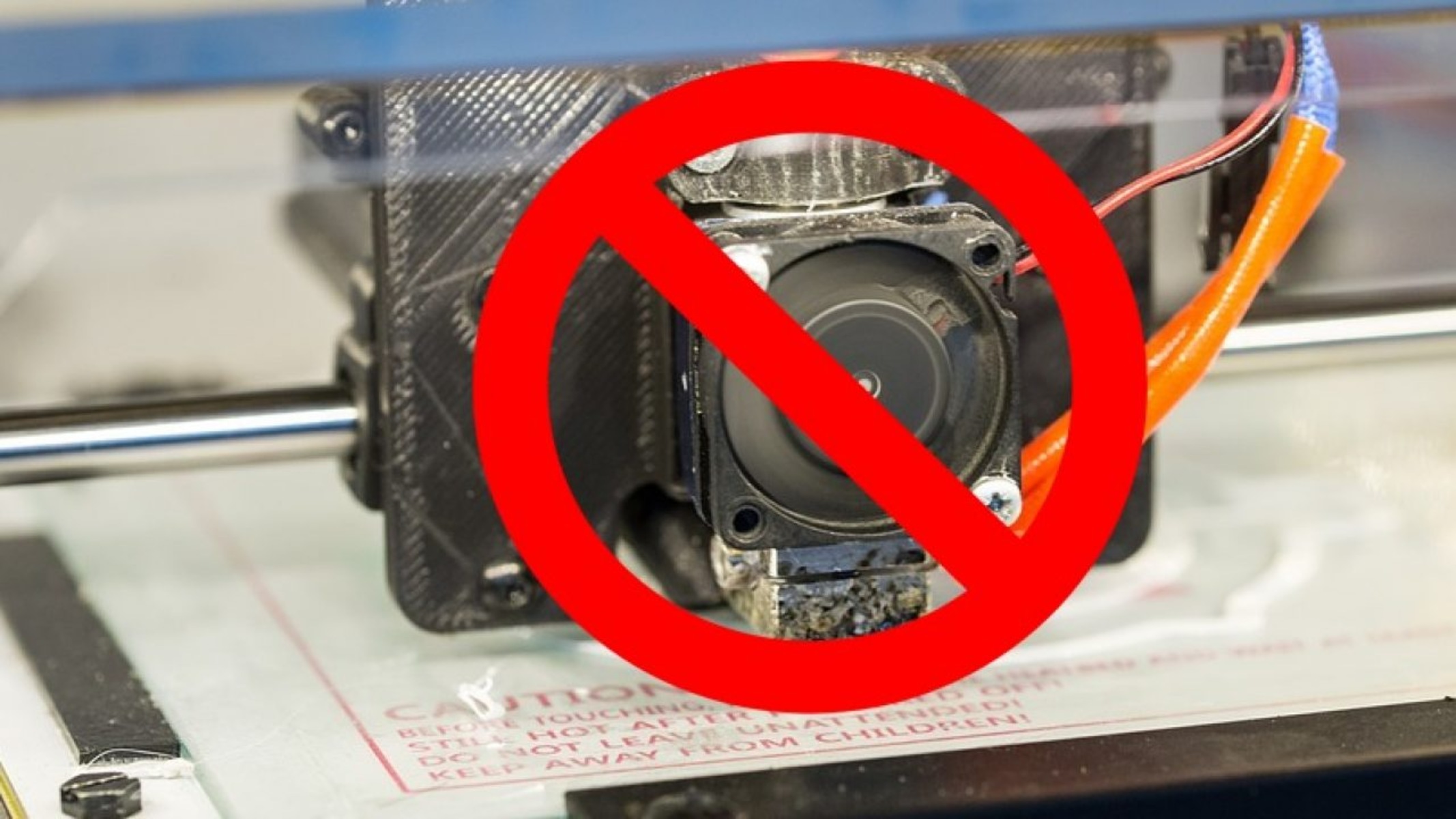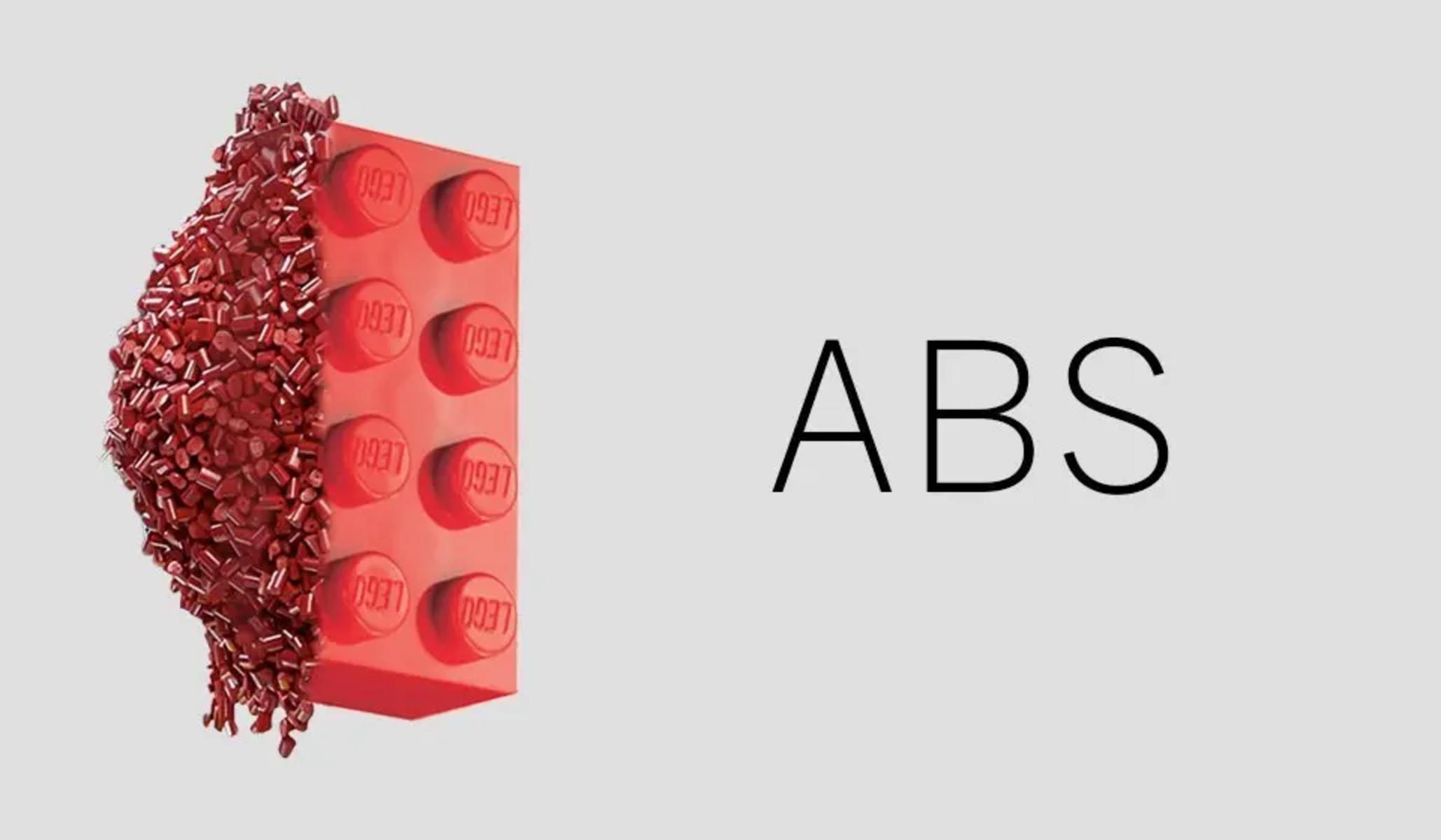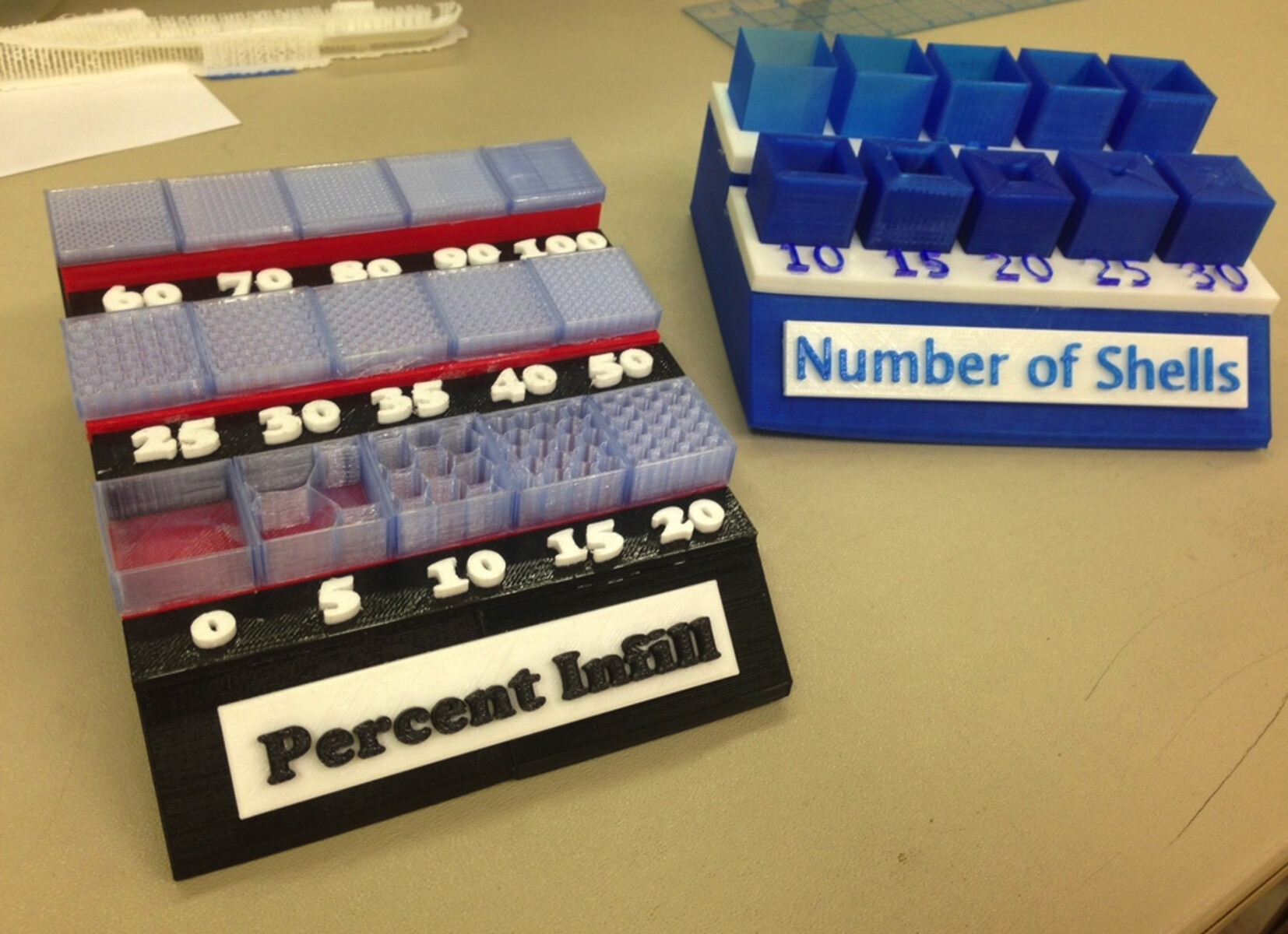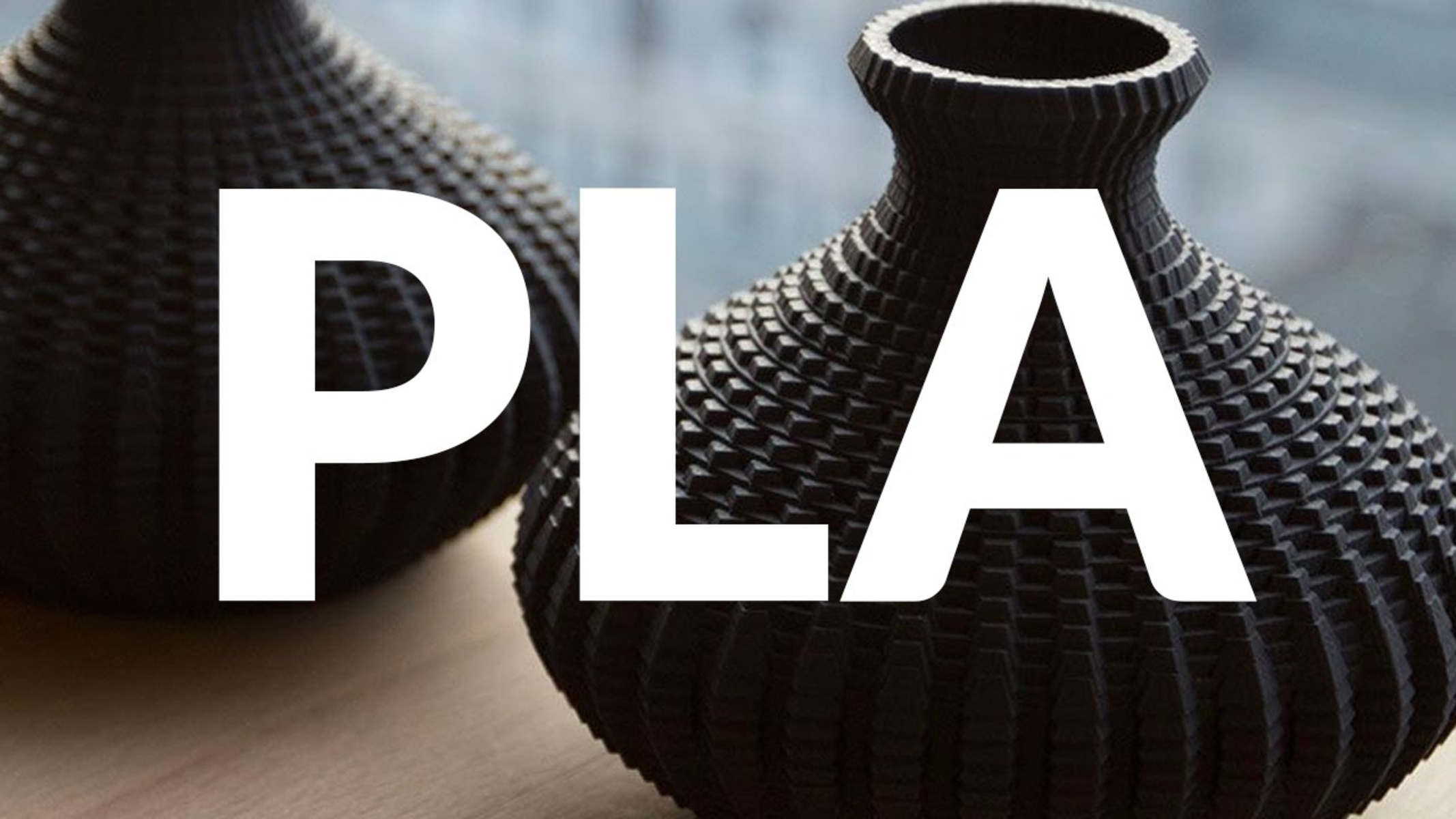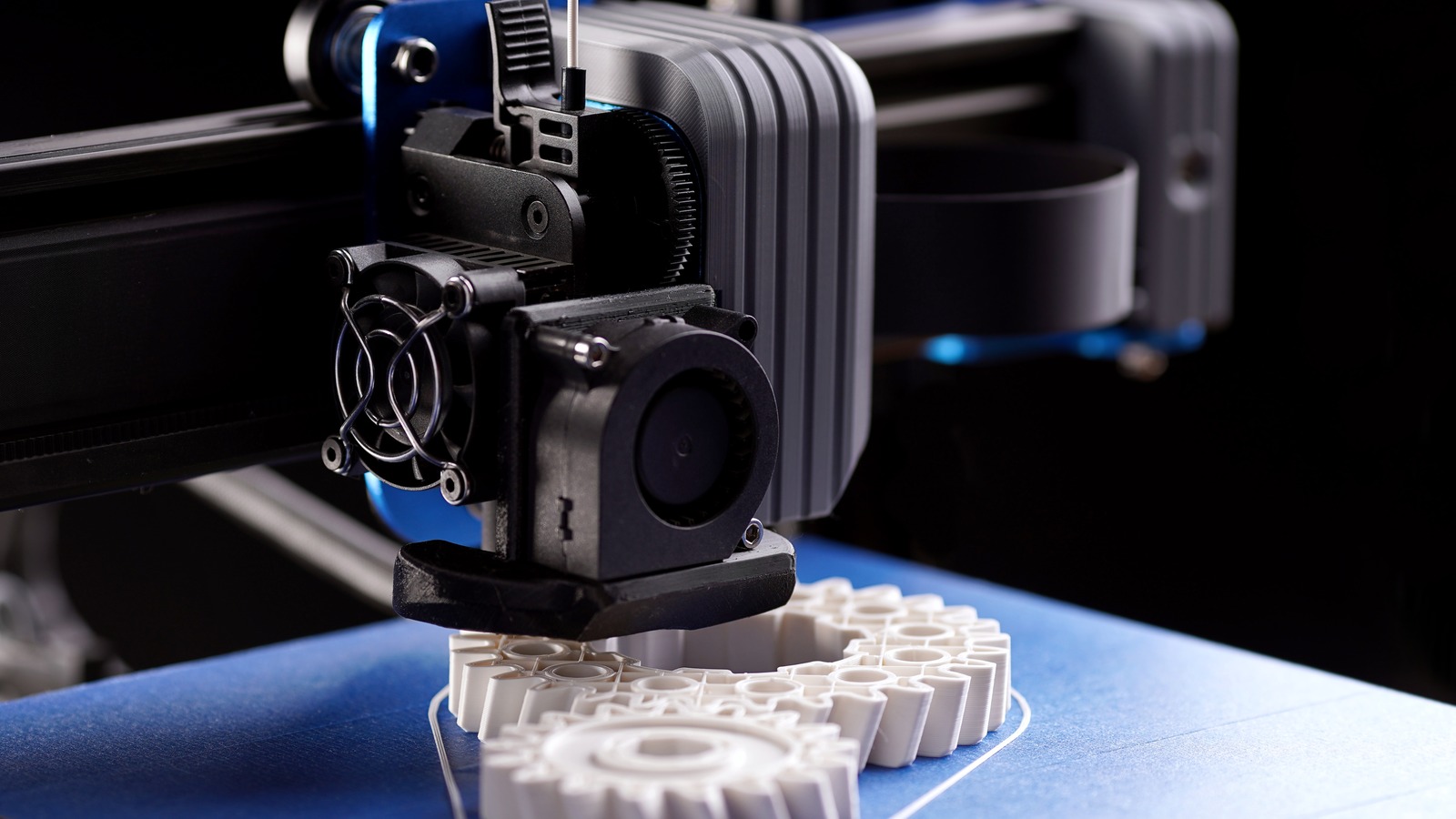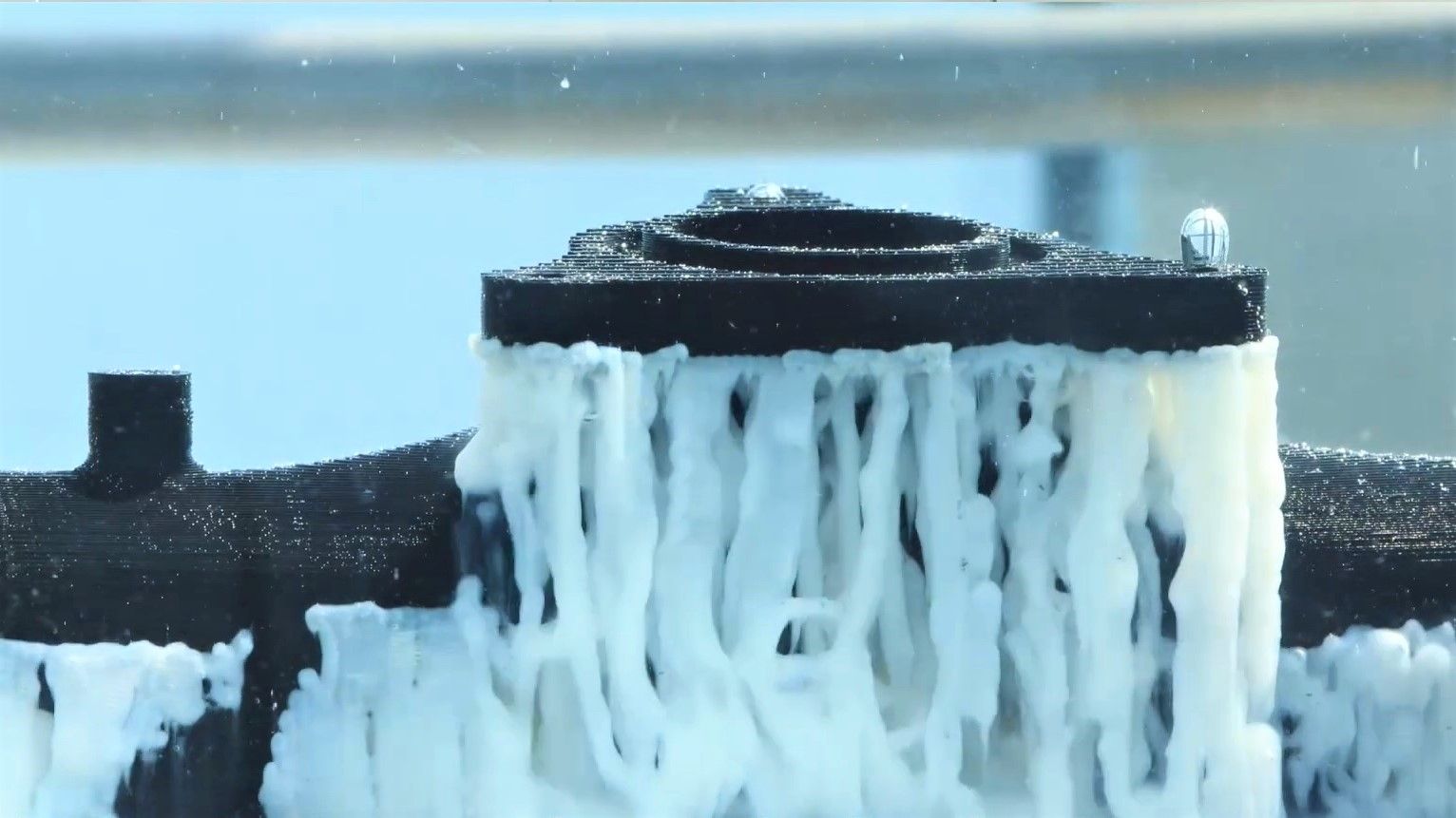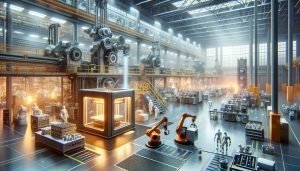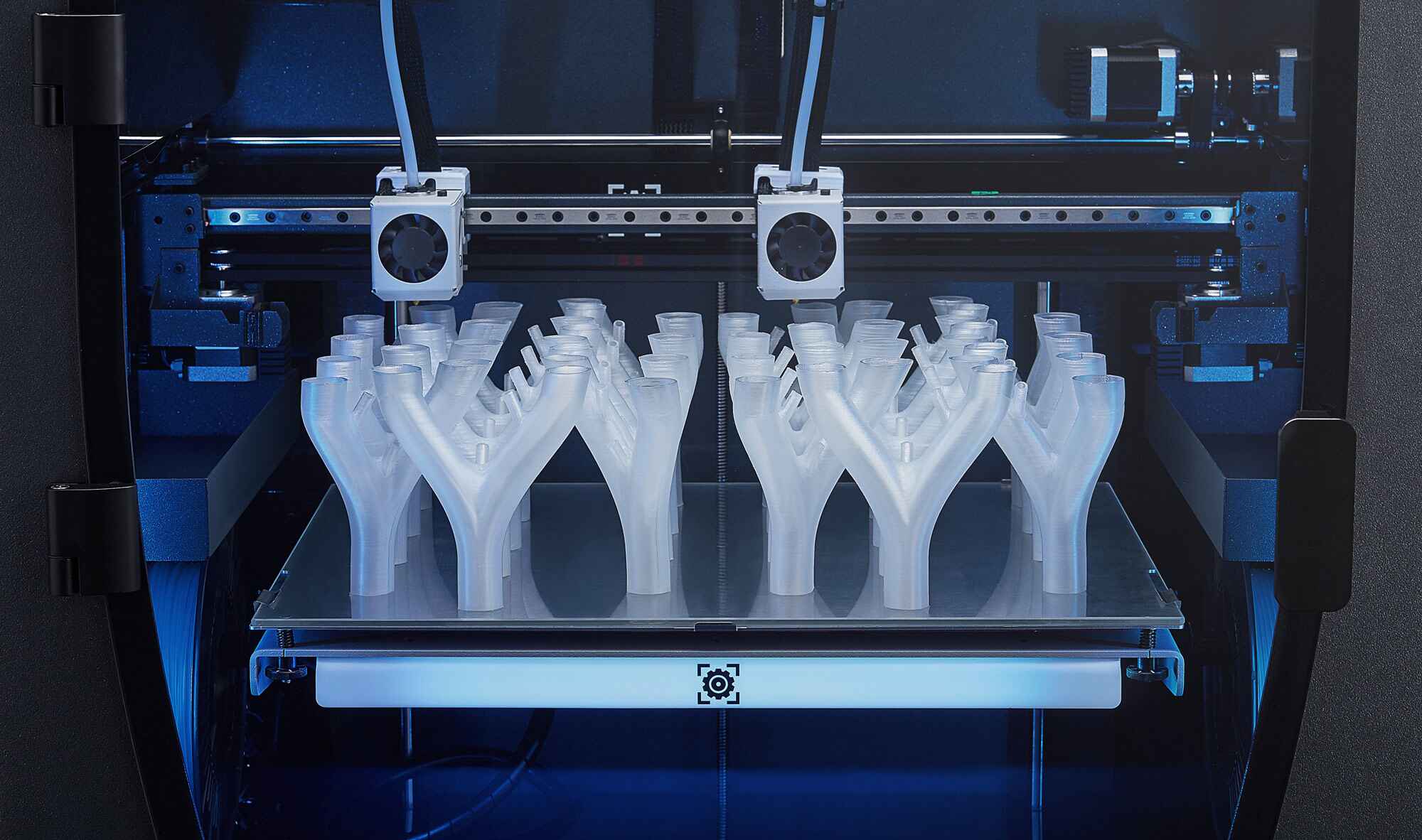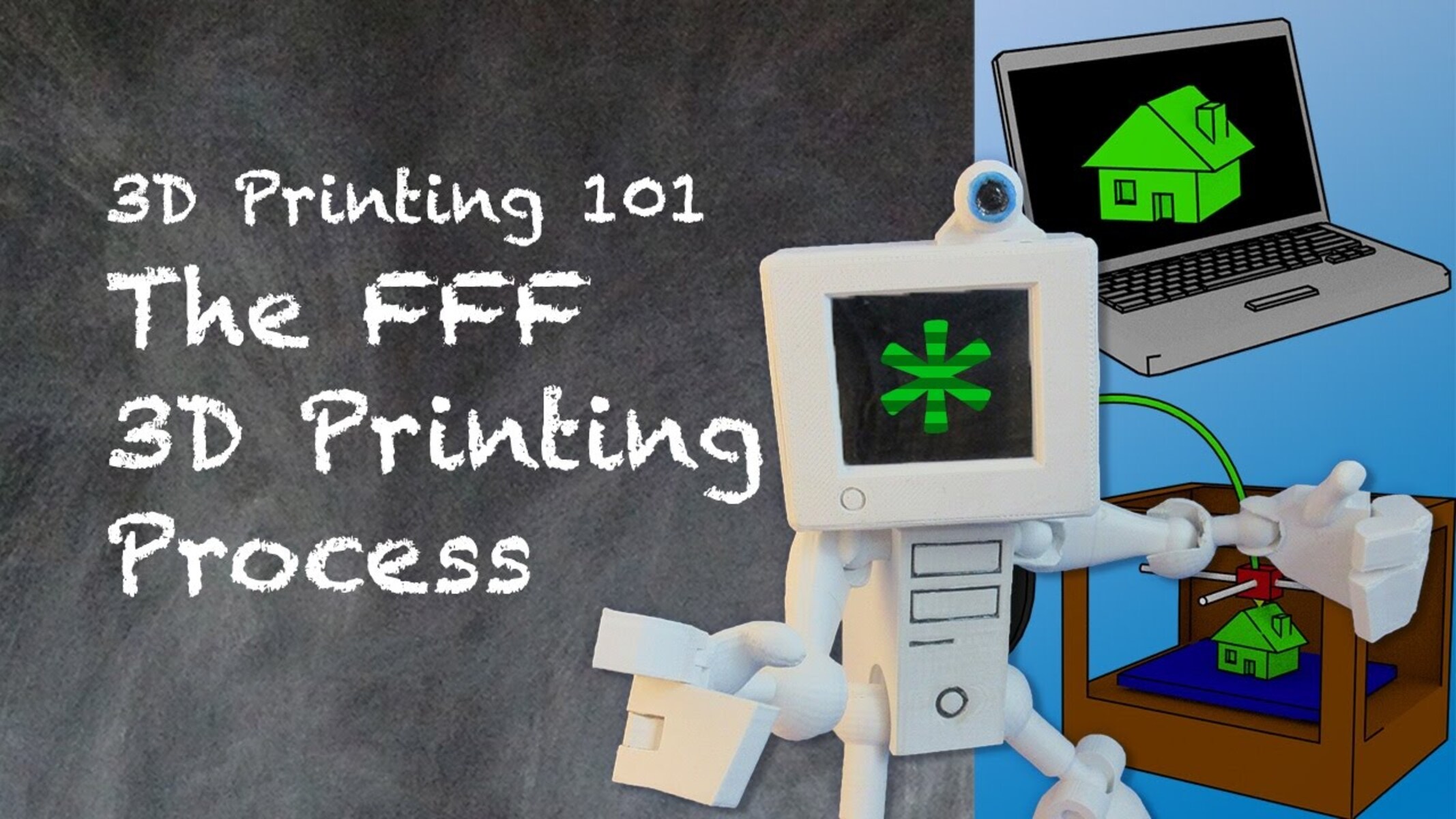Introduction
Welcome to the world of 3D printing, a groundbreaking technology that has revolutionized manufacturing processes across various industries. With its ability to create intricate designs and prototypes with ease, 3D printing has gained immense popularity in recent years. However, like any other technology, it is not without its disadvantages. In this article, we will explore some of the drawbacks of 3D printing that industry professionals and enthusiasts should be aware of.
As the demand for rapid prototyping and customized products continues to rise, 3D printing has emerged as a game-changer. This technology allows the creation of three-dimensional objects by layering materials, such as plastics, metals, or ceramics. From healthcare to aerospace, 3D printing has made its mark by offering numerous benefits. However, it is essential to acknowledge the downsides that come with this innovation.
While 3D printing has its merits, one of the major disadvantages is the lack of speed. Compared to traditional manufacturing methods, 3D printing can be time-consuming. The process of building each layer of an object can take hours or even days, depending on the complexity and size of the item. This sluggish pace can hinder large-scale production and limit its efficiency in time-sensitive projects.
Another drawback is the limited material options available for 3D printing. Although the range of printable materials has expanded in recent years, it still falls short compared to the array of materials that traditional manufacturing processes can accommodate. This limitation restricts the feasibility of certain designs and applications, as well as the durability and functionality of the printed objects.
Cost is another disadvantage to consider. While 3D printing can be cost-effective for small scale and customized production, it may not be economical for mass production. The high initial investment in printers, materials, and maintenance can be a deterrent for businesses looking to adopt this technology on a large scale.
Complexity is also a challenge with 3D printing. It requires technical expertise and specialized software to design and prepare 3D models for printing. Additionally, troubleshooting and optimizing the printing process can be complex, especially for intricate or delicate designs. This complexity adds another layer of difficulty and learning curve for users.
Lack of Speed
One of the significant drawbacks of 3D printing is its lack of speed compared to traditional manufacturing methods. While 3D printing offers the advantage of creating complex and customized objects, the process itself can be time-consuming.
The time it takes to print an object using 3D printing technology is significantly longer than mass production methods. The reason for this is the layer-by-layer construction approach of 3D printing. Each layer needs to be formed and solidified before the next layer can be built, which can result in a slow production pace. Objects with intricate designs or large sizes can take several hours or even days to complete, depending on the complexity and size of the object.
This lack of speed can be a significant drawback, especially in industries where time is of the essence. For example, in the automotive industry, where the production of spare parts or prototypes is necessary, the slow pace of 3D printing can significantly impact the overall production timeline. Similarly, in the medical field, where the need for customized medical devices or implants may be urgent, the time it takes to 3D print these objects can delay patient care.
Another aspect to consider is the limited production capacity of 3D printers. In traditional manufacturing processes, large-scale production can be achieved with multiple machines and optimized assembly lines. With 3D printing, the production capacity is dependent on the number and size of the printers available. Scaling up production with 3D printing can require a substantial number of printers, which can add to the cost and space requirements.
Additionally, the slow speed of 3D printing can limit the ability to meet market demand for certain products. Industries that rely on high-volume production may find 3D printing impractical due to its time-consuming nature. This could result in missed business opportunities or the need to utilize alternate manufacturing methods to meet demand.
Despite the lack of speed, 3D printing remains a valuable tool for rapid prototyping, small-scale production, and customized manufacturing. However, it is essential to consider the time constraints and production limitations when deciding whether to implement 3D printing in a particular industry or project.
Limited Material Options
While 3D printing has come a long way in terms of materials available for printing, it still falls short compared to the diverse range of materials that can be used in traditional manufacturing processes. This limitation in material options is a significant drawback of 3D printing.
3D printers can currently print using various materials such as plastics, metals, ceramics, and even food-grade materials. However, the range of materials is still limited compared to what can be used in traditional manufacturing methods. For example, manufacturing processes such as injection molding can work with a wide range of plastics, including those with specific properties such as flexibility or high temperature resistance. In comparison, 3D printers may only be compatible with a specific subset of plastics, restricting the design possibilities and functionality of the printed objects.
Additionally, the material options for 3D printing can vary in terms of quality and durability. 3D printed objects may not have the same strength or resilience as objects made with traditional manufacturing methods. For applications that require high mechanical strength or heat resistance, the limited material options in 3D printing may pose challenges.
Another limitation is the lack of availability of certain materials for 3D printing. While there have been advancements in materials over the years, some materials, especially specialized or exotic ones, may not be readily available for use in 3D printers. This restricts the potential applications and limits the ability to create certain types of objects.
Furthermore, the compatibility of materials with specific printers can also be a challenge. Not all printers can handle every type of material, and compatibility issues may arise when trying to print certain materials on specific printers. This restricts the flexibility and ease of use of 3D printing technology.
Despite the limitations in material options, 3D printing continues to evolve, and new materials are continuously being developed for use in this technology. As research and innovation in 3D printing continue, we can expect an expansion in the range of materials available, providing more options and possibilities for the industry.
Cost
While 3D printing offers numerous advantages, one significant drawback is the cost associated with implementing and maintaining this technology. The initial investment required to adopt 3D printing can be substantial, making it less accessible for small businesses or individuals.
The costs of 3D printing include the purchase of the printer itself, which can range from a few hundred to several thousand dollars, depending on the size, capabilities, and brand. In addition to the printer, there are costs associated with acquiring the necessary software, materials, and peripherals such as scanners and post-processing equipment.
Moreover, the cost of materials for 3D printing can be higher compared to traditional manufacturing methods. While the cost of filament or resin used for printing objects has decreased over time, it can still be more expensive per unit compared to bulk materials used in mass production. This can significantly impact the overall cost of producing objects using 3D printing technology.
Another consideration is the maintenance and repair costs of 3D printers. Just like any other machinery, 3D printers require regular maintenance, calibration, and occasional repair or replacement of parts. These costs can add up over time and increase the overall expenses of using 3D printing technology.
Furthermore, scalability can be a cost limitation for 3D printing. While 3D printing is suitable for small-scale and customized production, it may not be the most cost-effective solution for mass production. The slow speed of printing and the limitations in the production capacity of printers can result in higher costs per unit when compared to other manufacturing methods.
It’s important for businesses to carefully evaluate the costs and benefits of 3D printing before implementing it. Conducting a cost analysis and considering factors such as the intended purpose, volume of production, and long-term sustainability can help in determining if 3D printing is a financially viable option.
Despite the cost considerations, 3D printing has the potential to bring significant cost savings in certain areas, such as rapid prototyping, customized production, and on-demand manufacturing. As the technology continues to advance and becomes more affordable, we can expect the costs associated with 3D printing to decrease, making it more accessible to a wider range of industries and individuals.
Complexity
One of the challenges associated with 3D printing is its inherent complexity. While this technology offers incredible design possibilities and customization options, it also requires technical expertise and specialized software to harness its full potential.
Firstly, designing a 3D model for printing can be a complex task. It requires knowledge of computer-aided design (CAD) software and familiarity with the principles of 3D modeling. Creating a well-designed and functional object may involve intricate technical specifications and considerations, such as wall thickness, support structures, and print orientation. Additionally, designing complex or organic shapes can be more challenging and time-consuming compared to traditional 2D design processes.
Once the design is complete, preparing the model for printing requires further expertise. This includes tasks such as slicing the 3D model into layers, adjusting settings for print quality and material usage, and generating support structures if needed. These steps can involve a learning curve, as different printers and materials may require specific settings and parameters.
Furthermore, troubleshooting 3D printing issues can be a complex process. As with any technology, problems can arise during printing, such as layer shifting, warping, or failed prints. Identifying and resolving these issues often requires a deep understanding of the printer’s mechanics, materials, and software settings. Experimentation, calibration, and fine-tuning may be necessary to achieve successful prints.
Another aspect of complexity is the post-processing of printed objects. Depending on the desired finish and functionality, additional steps such as sanding, painting, or assembly may be required. This adds to the overall complexity of the 3D printing process and may require additional skills or resources.
It’s important to note that as 3D printing technology advances, there are efforts to simplify the process and make it more user-friendly. Simplified software interfaces, pre-configured settings, and intuitive design tools are being developed to lower the barriers to entry and reduce the complexity associated with 3D printing.
Despite the complexities, the benefits of 3D printing, such as rapid prototyping and high customization capabilities, make it a valuable tool in various industries. With advancements in technology and increased accessibility, the complexity of 3D printing is gradually being mitigated, allowing more individuals and businesses to harness its potential.
Durability
One of the disadvantages of 3D printing technology is the potential limitation in durability when compared to objects manufactured using traditional methods. While 3D printed objects can be strong and functional, they may not always exhibit the same level of durability and longevity as their traditionally manufactured counterparts.
The durability of 3D printed objects depends on various factors, including the printing material, design considerations, and post-processing techniques. Unlike injection molding or machining, 3D printing typically involves layer-by-layer construction, resulting in a different structural integrity. The layered nature of 3D printed objects can lead to potential weaknesses or inconsistencies that may affect their durability over time.
Additionally, the range of materials available for 3D printing may not always provide the same level of strength, toughness, or resistance to environmental factors as traditional manufacturing materials. For example, metal parts produced through additive manufacturing methods may have different properties and durability characteristics when compared to those produced through conventional manufacturing methods such as casting or forging.
Furthermore, the printing orientation and settings can impact the strength and durability of printed objects. In some cases, specific orientations or support structures may be required during the printing process to ensure optimal strength and stability. Failure to consider these factors may result in weaker or less durable final products.
Post-processing techniques, such as sanding, smoothing, or applying protective coatings, can enhance the durability and performance of 3D printed objects. However, these additional steps can add complexity, time, and cost to the overall production process.
It is important to note that advancements in 3D printing technology and materials are continuously being made to address durability concerns. Researchers and manufacturers are striving to develop stronger, more durable materials specifically tailored for 3D printing applications. These advancements, combined with improved printing techniques and optimized designs, can help enhance the durability of 3D printed objects.
Despite the current limitations, 3D printing has proven to be invaluable in various industries, particularly for prototyping, custom production, and low-volume manufacturing. As the technology continues to evolve, addressing durability concerns will be crucial to expanding its applications and competing with traditional manufacturing methods.
Quality Control
Quality control is a significant concern when it comes to 3D printing technology. While 3D printing offers advantages such as customization and rapid prototyping, ensuring consistent and reliable quality can be a challenge.
One of the main factors contributing to quality control issues in 3D printing is the variability that can occur during the printing process. Factors such as printer calibration, temperature fluctuations, and material inconsistencies can all impact the final outcome of the printed object. Small variations or errors in these parameters can result in defects or inaccuracies in the printed objects.
Another consideration is the layer-by-layer construction of 3D printed objects. Each layer is built sequentially, and any imperfections or errors in one layer can propagate to subsequent layers, affecting the overall quality. This can lead to issues such as surface roughness, dimensional inaccuracies, or weak points in the structure.
Additionally, factors such as print speed, infill density, and support structures can affect the integrity and quality of the printed objects. If these parameters are not properly set or optimized, it can result in compromised quality, reduced strength, or difficulties in post-processing.
Post-processing techniques, such as sanding, polishing, or painting, can be used to improve the aesthetics and surface finish of 3D printed objects. However, the need for post-processing adds an extra step to the production process and may introduce variability in the final quality based on the skills and techniques used.
Ensuring consistent quality control in 3D printing requires careful monitoring, calibration, and validation. Regular maintenance of the printer, calibration of parameters, and testing of materials can help minimize variability and reduce the chances of defects. Quality control practices such as inspection, testing, and validation of printed objects can also play a crucial role in identifying and rectifying any issues.
Furthermore, certifications and standards specific to 3D printing materials and processes are being developed to ensure consistent quality and performance. These standards aim to provide guidelines and benchmarks for quality control measures, helping businesses and users establish reliable and repeatable 3D printing practices.
Although quality control can present challenges in 3D printing, ongoing research, advancements in technology, and the development of industry standards are continuously improving the quality and reliability of 3D printed objects. With proper calibration, validation, and quality control practices in place, the potential of 3D printing to create high-quality and functional objects can be fully realized.
Intellectual Property Issues
One of the significant concerns surrounding 3D printing technology is the potential for intellectual property (IP) infringement. With the ability to easily reproduce physical objects from digital files, 3D printing raises questions about copyright, patent, and trademark protections.
One of the main challenges in relation to intellectual property and 3D printing is the unauthorized reproduction of copyrighted objects. With the increasing availability of 3D printable designs online, there is a risk of individuals and businesses creating and distributing copyrighted objects without the permission of the original creators. This can lead to potential copyright infringement issues and adversely impact the creative and economic rights of the original designers or companies.
Another concern is the replication of patented objects using 3D printing. Patented designs and processes are legally protected, and reproducing them without permission can infringe on the patent holder’s rights. However, 3D printing technology can make it easier for individuals to create and produce patented objects, potentially leading to patent infringement cases.
Trademarks are also at risk in the realm of 3D printing. Counterfeit or unauthorized replicas of trademarked products can be produced using 3D printing technology, diluting the value and reputation of the original brands. This can lead to brand identity and consumer trust issues, as well as potential legal repercussions for those involved in the unauthorized production.
Addressing intellectual property concerns in 3D printing requires a multifaceted approach. One aspect is the education and awareness of IP laws and regulations among 3D printing users and designers. Understanding the implications of copyright, patents, and trademarks can help individuals and businesses navigate the 3D printing landscape responsibly and ethically.
Additionally, technological advancements are being made to protect intellectual property in the world of 3D printing. One example is the integration of digital rights management (DRM) systems that can control access to and usage of digital design files. These systems can limit or regulate the distribution, modification, or replication of copyrighted or patented designs.
Furthermore, collaborations between industry stakeholders, manufacturers, and legal entities can help develop guidelines, standards, and best practices for addressing intellectual property issues in the 3D printing space. This can involve establishing licensing frameworks, promoting open-source initiatives, and encouraging responsible usage of 3D printing technology.
As 3D printing continues to evolve, it is crucial to address intellectual property issues to protect the rights of content creators, innovators, and brand owners. Balancing the potential of 3D printing with proper legal frameworks and ethical practices will be instrumental in ensuring a sustainable and responsible future for this technology.
Health Hazards
While 3D printing technology offers numerous benefits, it is important to consider the potential health hazards associated with the process. From the materials used to the emissions released during printing, there are several factors that can pose risks to the health of individuals involved in or exposed to 3D printing.
One of the primary concerns is the emission of volatile organic compounds (VOCs) and ultrafine particles during the 3D printing process. Different printing materials, such as plastics or resins, can release airborne particles and fumes that may contain hazardous chemicals. Prolonged exposure to these emissions in poorly ventilated environments can lead to respiratory issues and other health complications.
Furthermore, certain 3D printing materials, such as powders used in metal 3D printing, can pose additional risks. The handling and inhalation of metal powders may result in metal dust exposure, which can be hazardous to respiratory health. Proper precautions, such as the use of personal protective equipment, should be taken when working with these materials, especially in industrial settings.
In addition to particulate matter, some 3D printing processes, such as the use of photopolymer resins, involve the use of ultraviolet (UV) light. Direct exposure to UV radiation can be harmful to the skin and eyes, causing damage and increasing the risk of long-term health effects such as skin cancer or cataracts. Users should follow safety guidelines and use protective measures when working with UV-sensitive materials or printers.
Post-processing techniques, such as sanding or polishing 3D printed objects, can also generate fine particles that may be hazardous if inhaled. Precautions should be taken to avoid direct exposure to these particles, such as using appropriate personal protective equipment and working in well-ventilated areas.
It is crucial to note that the health risks associated with 3D printing can vary depending on the specific materials used, the printing process, and the duration and intensity of exposure. Understanding the potential hazards and implementing safety measures, such as effective ventilation systems, personal protective equipment, and adherence to safety guidelines, can help mitigate health risks.
Regulatory bodies and organizations are continuously working to set safety standards and guidelines for 3D printing. These standards aim to minimize health hazards and ensure proper safety protocols are followed in various applications of 3D printing.
While 3D printing technology offers immense potential, it is essential to prioritize the health and safety of individuals involved. By understanding and addressing the potential health hazards, we can continue to harness the benefits of 3D printing while protecting the well-being of users and those exposed to the technology.
Environmental Impact
As 3D printing technology continues to gain popularity and widespread adoption, it is important to consider its environmental impact. While 3D printing offers advantages such as reduced material waste and localized production, there are several factors that contribute to its overall environmental footprint.
One of the key environmental concerns with 3D printing is the use of materials. Depending on the printing method and material, there can be significant energy and resource consumption. Plastics, in particular, are widely used in 3D printing and can contribute to plastic waste if not properly managed or recycled. Furthermore, some materials used in 3D printing, such as certain resins or metals, may have their own environmental implications, such as the extraction of raw materials or the generation of hazardous waste during the manufacturing process.
Energy consumption is another important consideration. 3D printers often require electricity to operate, and the energy usage varies depending on the type, size, and complexity of the printer. The energy required to heat the print bed, melt the printing material, and power the printer’s motors can contribute to carbon emissions and depletion of fossil fuels, especially if printers are running continuously or in large-scale production settings.
Furthermore, the lifecycle of printed objects should be taken into account. While 3D printing can reduce material waste compared to traditional manufacturing methods, printed objects may still have a limited lifespan. If not properly disposed of or recycled at the end of their life, they can contribute to landfill waste or add to the burden on recycling facilities.
However, it is important to note that 3D printing also offers opportunities for environmental benefits. For example, by localizing production through on-demand manufacturing, there can be a reduction in transportation-related emissions and a decrease in overall logistics. Additionally, the ability to produce customized designs and reduce excess material wastage can lead to more efficient resource utilization.
To mitigate the environmental impact of 3D printing, several measures can be taken. These include using recycled or biodegradable materials for printing, optimizing printing processes to minimize energy consumption, and implementing end-of-life solutions for printed objects, such as recycling or proper disposal. Additionally, advances in sustainable materials and renewable energy sources for powering printers can further reduce the ecological footprint of 3D printing technology.
Overall, a comprehensive approach that considers the entire lifecycle of 3D printed objects, from material sourcing to disposal, is essential for minimizing the environmental impact. By adopting sustainable practices and integrating environmentally friendly solutions, the potential of 3D printing technology to contribute positively to a more sustainable future can be realized.
Conclusion
3D printing is an innovative technology that has transformed various industries and revolutionized the way we design, create, and produce objects. However, like any technology, it is not without its disadvantages. In this article, we have explored some of the drawbacks of 3D printing, including the lack of speed, limited material options, cost implications, complexity, durability concerns, quality control challenges, intellectual property issues, health hazards, and environmental impact.
While 3D printing offers numerous benefits and opportunities, it is crucial to be aware of these drawbacks and consider them when deciding to adopt this technology. From a lack of speed that can hinder large-scale production, to the limited material options that can impact design feasibility and durability, each drawback brings its own set of considerations and implications.
However, it is important to note that advancements are being made in addressing these drawbacks. Research and development efforts are focused on improving the speed, expanding the range of printable materials, reducing costs, simplifying the process complexity, enhancing the durability of printed objects, ensuring quality control, addressing intellectual property concerns, mitigating health hazards, and minimizing the environmental impact.
Ultimately, the decision to leverage 3D printing technology should be made with a thorough understanding of these drawbacks and their potential implications on specific industries, projects, and applications. With proper planning, safety measures, adherence to regulations, and responsible use, the benefits of 3D printing can be harnessed while mitigating the associated drawbacks.
As 3D printing continues to evolve, collaboration between industry stakeholders, regulatory bodies, and manufacturers will be crucial to establishing guidelines, standards, and best practices that ensure responsible and sustainable utilization of this technology.
By considering the drawbacks, addressing the challenges, and embracing the potential of 3D printing, we can continue to push the boundaries of innovation and creativity in manufacturing, healthcare, engineering, and other industries while navigating the complexities and implications of this groundbreaking technology.







